7 IoT Solutions Powering Modern Logistics
The Internet of Things (IoT) is transforming the logistics industry, offering innovative solutions to optimise operations and streamline supply chain management.
These innovative IoT systems leverage a complex network of interconnected sensors, actuators, and data analytics platforms to provide unprecedented levels of visibility, control, and efficiency across the entire logistics ecosystem.
Explore seven groundbreaking IoT-enabled solutions reshaping logistics operations, with insights from ByteSnap Design’s expertise in developing IoT and M2M solutions.
Here’s a guide to covering the technical intricacies that make these developments possible.
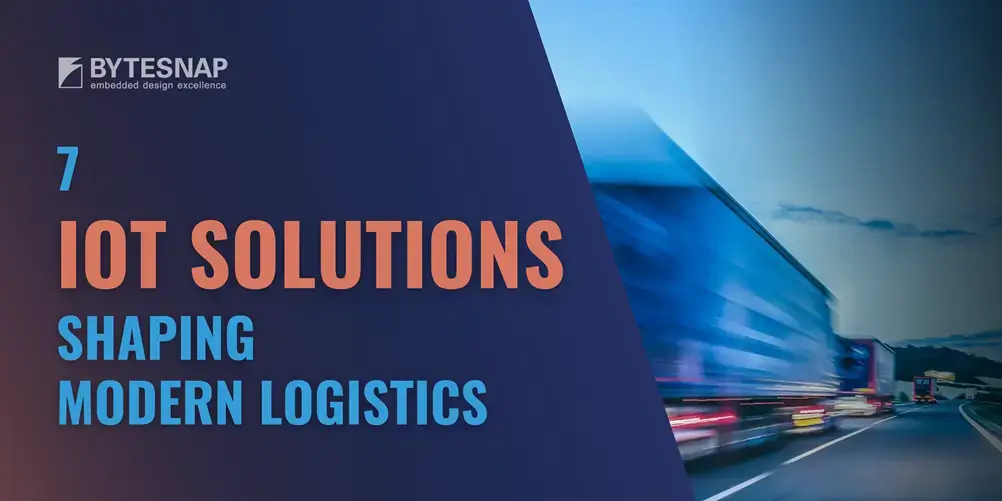
1. Real-Time Asset Tracking and Monitoring
IoT-enabled sensors are redefining shipment and inventory tracking, providing real-time visibility throughout the supply chain.
These progressive tracking systems use low-power wireless technologies such as LPWAN (Low-Power Wide-Area Network) protocols like LoRaWAN, NB-IoT, or Sigfox to offer continuous monitoring of assets, ensuring accurate location data and condition status.
The integration of GPS, RFID, and cellular technologies enables precise geolocation, while environmental sensors monitor parameters such as temperature, humidity, and shock to ensure cargo integrity.
The benefits of real-time asset tracking include:
Improved Inventory Management
15% average inventory reduction through real-time stock level monitoring and automated reordering systems
Reduced Loss and Theft
$1.4 billion annual savings through enhanced security measures and real-time alerting systems
Enhanced Customer Satisfaction
25% increase in satisfaction through accurate ETAs and proactive issue resolution
Optimised Route Planning
$1,000 fuel savings per vehicle/year through AI-driven route optimisation algorithms
2. Smart Warehouse Automation
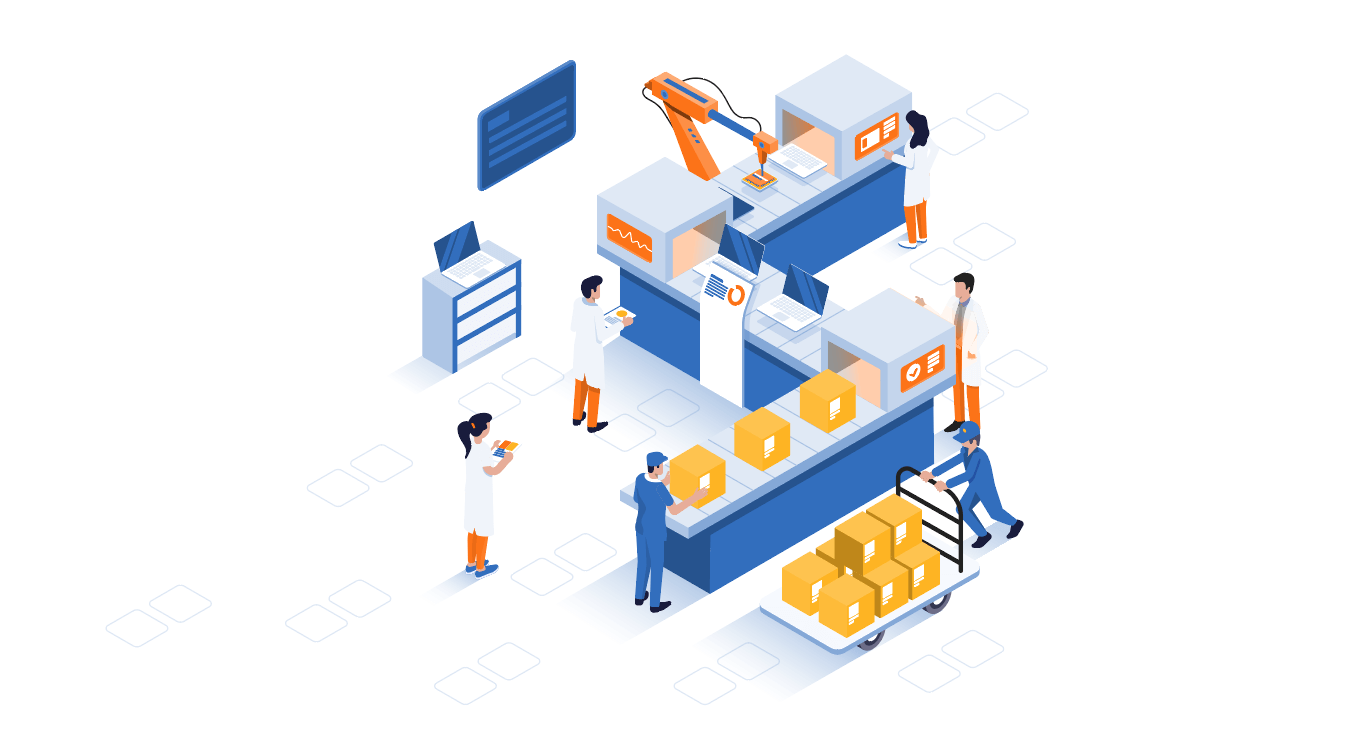
IoT-powered robotics and automated storage systems are transforming warehouse operations, significantly improving efficiency and reducing human error.
These systems integrate robotics, machine vision, and AI-driven decision-making algorithms to create highly efficient and flexible warehouse environments.
ByteSnap Design’s expertise in industrial solutions contributes to the development of these technologies, particularly in areas such as embedded systems design and industrial communication protocols.
Key features of smart warehouse automation include:
- Automated guided vehicles (AGVs) for material handling, utilising simultaneous localisation and mapping (SLAM) algorithms for autonomous navigation
- IoT-enabled inventory management systems with RFID and computer vision technologies for real-time stock tracking
- Smart shelving and storage solutions with weight sensors and LED picking guidance systems
- Real-time data analytics for optimised warehouse layout, leveraging machine learning algorithms to predict and adapt to changing inventory patterns
3. Intelligent Transportation Management
Connected vehicles and fleet management systems are revolutionising transportation logistics.
They leverage a combination of GPS, telematics, and IoT sensors to provide real-time visibility into vehicle performance, driver behaviour, and cargo conditions.
ByteSnap’s experience in automotive and rail solutions contributes to the development of these systems, which optimise routes and reduce fuel consumption through sophisticated algorithms and data analysis.
Additional benefits of intelligent transportation management include:
- Enhanced Safety: Real-time monitoring of driver behaviour, including factors like speed, acceleration, and braking patterns, combined with AI-driven analysis to identify and mitigate risky driving habits.
- Improved Asset Utilisation: AI-powered demand forecasting and capacity planning tools that optimise fleet size and composition based on historical data and predicted future needs.
- Reduced Operational Costs: Through a combination of fuel savings, optimised maintenance schedules, and improved route efficiency, intelligent transportation management systems can significantly reduce overall operational costs.
- Enhanced Customer Service: Providing accurate, real-time ETAs and proactive communication about potential delays or issues, improving customer satisfaction and loyalty.
- Environmental Impact Reduction: By optimising routes and reducing fuel consumption, these technologies contribute to lower carbon emissions and a reduced environmental footprint of logistics operations.
ByteSnap’s contribution to intelligent transportation management extends to the development of custom hardware and software solutions tailored to the specific needs of logistics companies.
Their expertise in designing rugged, low-power IoT devices ensures that the hardware can withstand the demanding conditions of transportation environments while providing reliable, long-term operation.
As the field of intelligent transportation management expands further, expect to see further integration with emerging technologies such as autonomous vehicles, drone delivery systems, and AI-driven predictive models.
These developments will further enhance the efficiency, safety, and sustainability of logistics operations, paving the way for a more interconnected and intelligent transportation ecosystem.
4. Predictive Maintenance for Logistics Equipment
IoT sensors play a key role in monitoring equipment health, enabling predictive maintenance strategies that reduce downtime and maintenance costs.
A combination of vibration analysis, thermal imaging, and acoustic sensors are used in these IoT solutions to detect early signs of equipment failure.
Machine learning algorithms, such as random forests and support vector machines, analyse the sensor data to predict potential failures and optimise maintenance schedules.
ByteSnap’s expertise in embedded firmware development contributes to the creation of sophisticated predictive maintenance systems, particularly in areas such as sensor integration and data processing at the edge.
Benefits of IoT-enabled predictive maintenance:
- Early detection of potential equipment failures through real-time monitoring and anomaly detection algorithms
- Optimised maintenance schedules using machine learning models to predict optimal maintenance windows
- Increased equipment lifespan through proactive maintenance and reduced wear and tear
- Reduced operational disruptions by minimising unplanned downtime and scheduling maintenance during off-peak hours
5. Smart Charging Solutions for Electric Logistics Vehicles
Smart charging solutions are key to the logistics industry as it shifts towards electric vehicles.
These systems integrate power electronics, IoT connectivity, and intelligent energy management algorithms to optimise charging processes and grid integration.
The MantaRay Smart Charge point communications Controller – by ByteSnap’s spin-out EV infrastructure company Versinetic – offers innovative features for managing EV charging infrastructure, leveraging technologies such as OCPP (Open Charge Point Protocol) and dynamic load balancing.
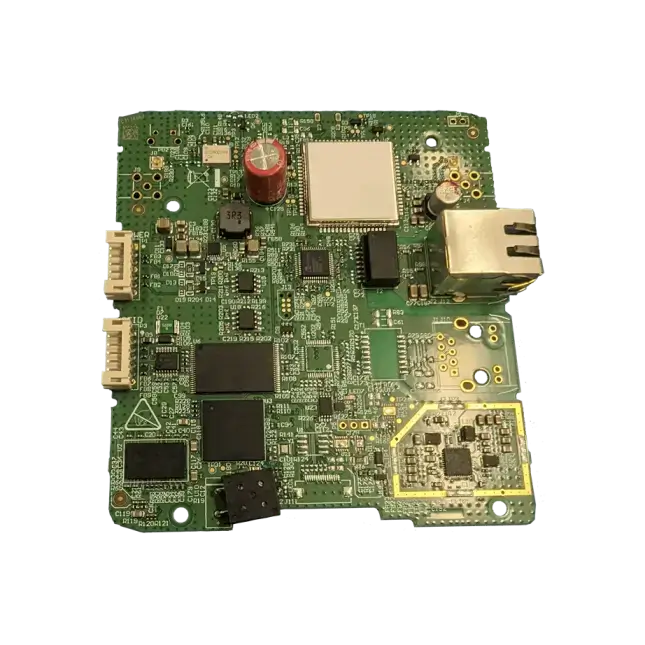
Key features of MantaRay include:
- Support for both AC and DC chargers, with intelligent power management to optimise charging efficiency
- Load balancing to prevent network overload, utilising algorithms to distribute available power across multiple charging points
- Compliance with latest communication standards, including OCPP 2.0 and ISO 15118 for vehicle-to-grid (V2G) functionality
Remote monitoring and control capabilities through secure cloud-based platforms, enabling real-time diagnostics and over-the-air updates
6. Data Analytics and AI-Driven Decision Making
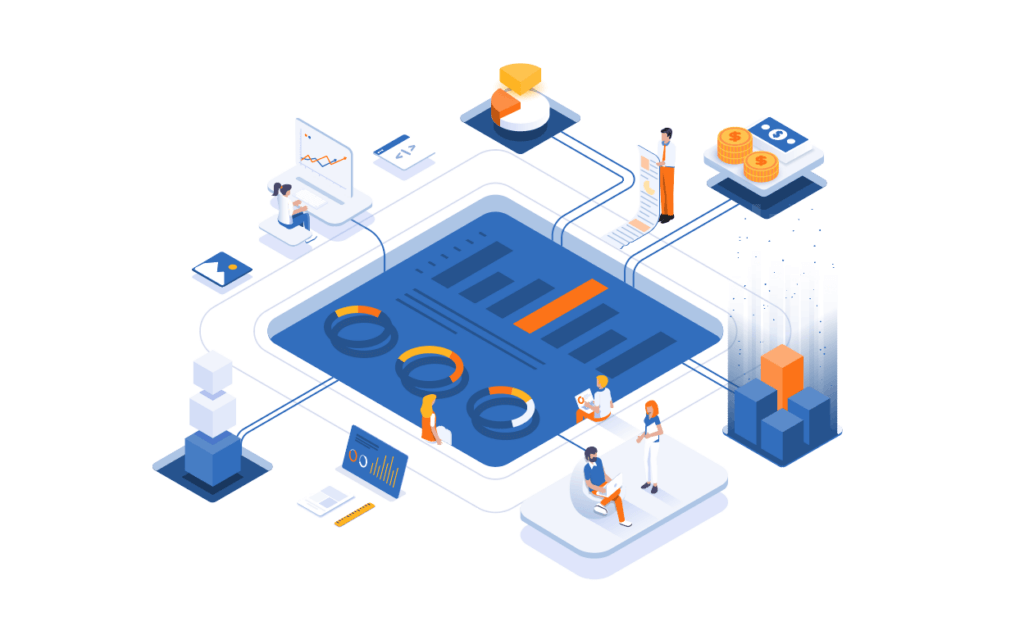
Leveraging IoT data for supply chain optimisation is a game-changer in logistics. Analytics and artificial intelligence enable improved forecasting and demand planning, leading to more efficient operations.
These IoT solutions employ sophisticated machine learning models, including deep neural networks and ensemble methods, to analyse vast amounts of data from various sources across the supply chain.
In particular, these areas of logistics have seen enhanced performance:
Demand Forecasting
95% accuracy in predicting demand through time series models and machine learning algorithms
Route Optimisation
15% reduction in delivery time using dynamic routing algorithms and real-time traffic data analysis
Inventory Management
99% accuracy in tracking inventory levels through IoT-enabled RFID systems and AI-driven predictive analytics
Risk Assessment
20% reduction in supply chain disruptions utilising machine learning models for predictive risk analysis and mitigation strategies
7. Environmental Monitoring and Sustainability
IoT solutions are increasingly being used to monitor and improve the environmental impact of logistics operations.
They use a wide array of sensors and data analytics platforms to track and optimise various environmental parameters.
Smart technologies are enabling businesses to achieve their sustainability objectives while enhancing operational efficiency. This includes the use of sophisticated gas sensors to track carbon emissions and the implementation of intelligent building management systems to optimise energy usage in warehouse facilities.
ByteSnap’s expertise in energy solutions helps to drive eco-friendly logistics technologies. Their experience in designing low-power IoT devices and energy management systems is particularly valuable in creating sustainable logistics solutions.
The Future of IoT in Logistics
As we look to the future, IoT-enabled solutions will continue to play a pivotal role in shaping the logistics industry.
The convergence of IoT with other emerging technologies promises even greater progress in supply chain optimisation. Some key trends to watch include:
- Blockchain integration for enhanced supply chain transparency and traceability, providing immutable records of transactions and product movements
- 5G connectivity enabling ultra-low latency communication and massive IoT deployments, facilitating real-time decision-making and control in logistics operations
- Edge computing bringing high-level data processing capabilities closer to the source, reducing latency and enabling more autonomous decision-making in IoT devices
- Artificial Intelligence and Machine Learning are driving the development of more refined forecasting models and self-operating logistics systems.
- Digital twins of supply chains, allowing for in-depth simulation and optimisation of logistics processes
ByteSnap Design, with its comprehensive range of electronic design services and software development expertise, is at the forefront of this IoT revolution in logistics.
Their multidisciplinary approach, combining expertise in embedded systems, wireless communications, and software development, positions them uniquely to address the complex challenges of modern logistics systems.
By leveraging cutting-edge technologies and industry-specific knowledge, ByteSnap is helping businesses overcome challenges in the complex arena of smart logistics optimisation.
Their IoT solutions not only address current challenges but also pave the way for future innovations, enabling companies to stay ahead in an increasingly competitive and technology-driven industry.
The integration of IoT technologies will be vital for companies looking to improve efficiency, reduce costs, and meet sustainability goals going forwards.
The potential for IoT to transform logistics operations is vast, from enabling more transparent and resilient supply chains to facilitating the transition to cleaner, more sustainable transportation and warehousing practices.
Ultimately, the seven groundbreaking IoT solutions covered in this article represent just the beginning of a profound transformation in the logistics industry.
As these technologies mature and new innovations emerge, we can expect to see even more revolutionary changes in how goods are tracked, transported, and delivered.
Companies that embrace these IoT-driven solutions and partner with experienced technology providers like ByteSnap Design will be well-positioned to thrive in the fast-paced, data-driven future of logistics.
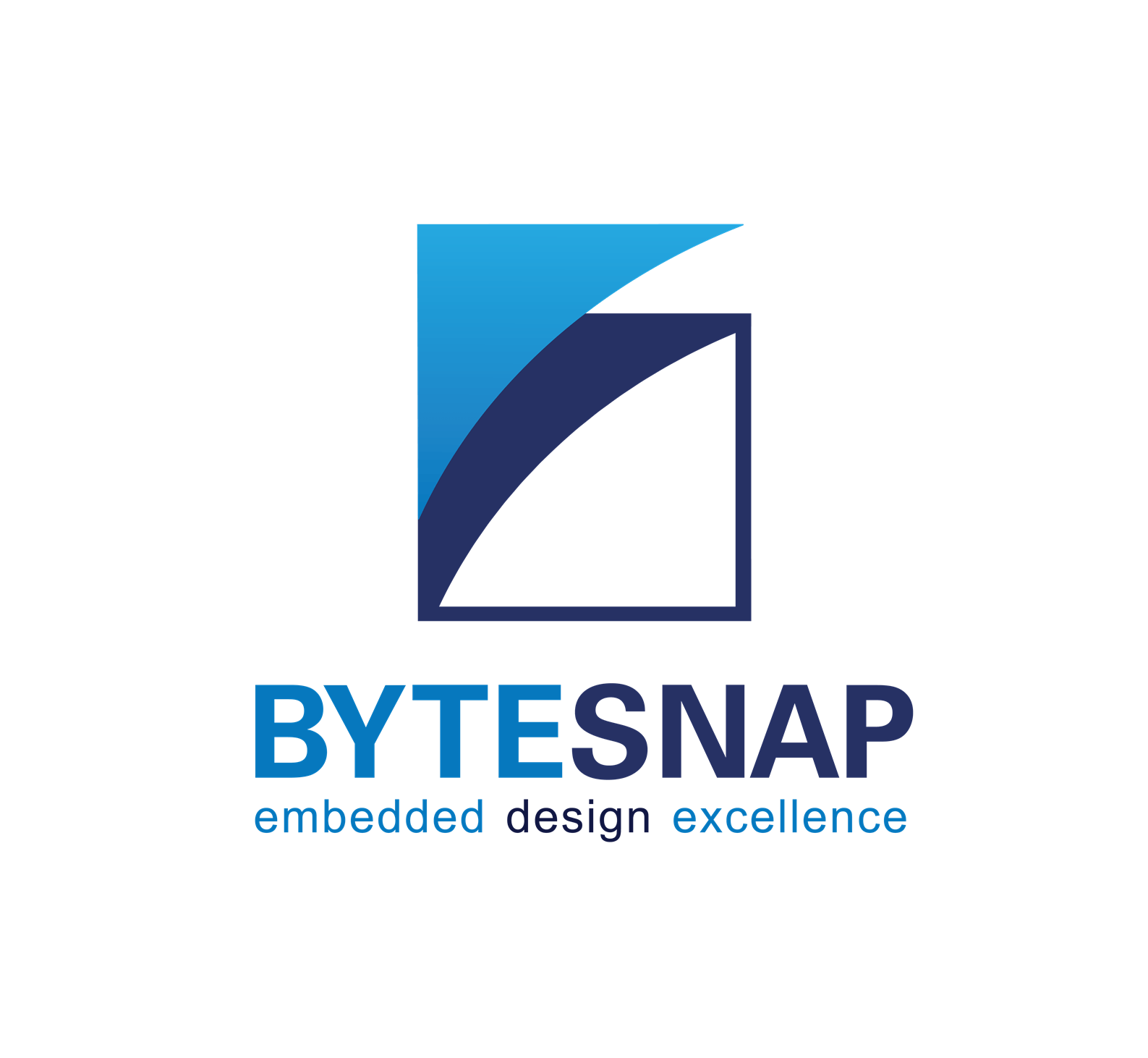
Founded in 2008, ByteSnap Design is an award-winning embedded systems design consultancy, offering a comprehensive range of services across the electronic product development lifecycle.
A highly skilled team of over 40 hardware and software engineers, our expertise spans several sectors, including IoT, automotive, industrial, medical, and consumer electronics.
The engineering consultants on the ByteSnap Editorial Team share their knowledge and practical tips to help you streamline your product development and accelerate designs to market successfully.
With their deep technical expertise and practical experience, they aim to provide valuable insights and actionable tips to guide you through the complex world of electronic product design and development, to help you bring innovative, reliable, and secure electronic products to market quickly and cost-effectively.




